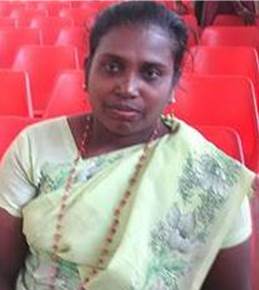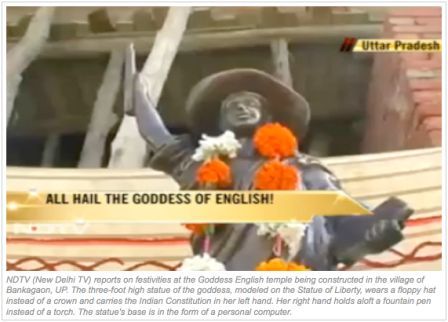Shaheen Ahmed
Last weekend after I woke up in the morning, I went through my usual morning ritual of turning on my computer after a cup of coffee and leafing through my mails and social media feed. It’s not surprising to see pictures, videos, website links, memes, etc. go viral over Facebook or Twitter these days and once such ad campaign went viral all over social media since last Friday (6th September). Friends, colleagues, journalists, academicians, feminists and a lot of people I connect with over social media were sharing the link to the ‘Save Our Sisters’ campaign online.
I am sure by the time one reads this article, most of us have seen the campaign. Apart from the national media, a lot of international media including Huffington Post, the Independent, Buzzfeed etc have carried stories centering around this campaign since yesterday. Popular feminist forums such as Jezebel and A Girl’s Guide to Taking Over the World have also lauded it as being a groundbreaking campaign driving home issues related to domestic violence and sex-trafficking.
The highly stylized campaign has women dressed up as the Indian goddesses Lakshmi, Saraswati and Durga, with visible injuries on their faces, tears streaming down their eyes and palpably hurt blank expressions.

The campaign by the NGO, Save the Children India, has statistics printed on the posters such as:
‘Last year alone, 244,270 crimes against women were reported in the country.’
Or –
‘Pray that we never see this day. Today, more than 68% of women in India are victims of domestic violence. Tomorrow, it seems like no woman shall be spared. Not even the ones we pray to.’
Each poster also carries a phone number (of the NGO in all probability) to report abuse.
Now, this entire Save Our Sisters campaign, while it maybe well-meaning, has been highly problematic for me to accept. The entire crux of the campaign lies in the very same patriarchal notions that feminists all over the country have been trying to overthrow or at least challenge, especially since the time of the Delhi gang-rape protests. The tradition of the ‘raksha bandhan‘ that entrusts men to protect their sisters’ ‘izzat‘ or honor whereby the woman is to be protected at all costs because she is a sister and not referred to as a woman with her own individualistic agency, is the kind of tradition that this campaign alludes to.
I refer back to these protests time and again because, for me it seems as a watershed moment in contemporary Indian history when there was a mass movement for gender justice, hitherto unseen. Yes, there has been criticism against the protests from various sections but, the scale of the protests and the involvement of students as well as people from various layers of society in crying out for justice and safety for women in the cityscape have been truly tremendous.
The notion of deifying the Indian woman is one of the central causes that has been at the root of the complex gender discourse in India. The very title of the campaign, again, negates the agency of a woman completely. Here in this campaign, the woman is seen vis-à-vis the agency of the male, thereby leading to this patriarchal notion of protecting the woman by the man. As a participant of the gang-rape protests that rocked the country’s capital, the one word that reverberated throughout, I remember, was ‘azaadi‘ or freedom for women from the yoke of patriarchy. Feminists, intellectuals rallied against this Indian notion of essentializing women as either mothers or sisters or wives and thus denying them their own agency or voice.
As a friend quotes on my social media feed: “It’s either a complete deification which leads to the good woman being protected otherwise, there is the extreme other, the whore who, obviously, needs no protection from men”. I concur with her views in this context. This campaign leads me back to the anti sex trafficking campaign which again became quite popular in 2011 and went viral. It is the ‘Real Men Don’t Buy Girls‘ campaign started by Hollywood stars Ashton Kutcher and Demi Moore with actors such as Sean Penn and Kutcher himself endorsing it1.
Amongst the many discourses that evolved with the December 2012 protests was also the de-construction of notions of masculinities, especially the idea of the ‘real man’. Even during the protests, there were placards and rhetoric that went around proclaiming ‘real men don’t rape’. What does it imply to say that ‘a real man does not pay for sex’ or that ‘real men don’t rape’? Here again, masculinity is worked around traditional tropes of patriarchy which enlists the man to protect the woman, who is seen as his mother/sister/wife/lover/friend etc. this campaign also made flippant of the agency of the perpetrator. So does it mean that a rapist who violates a woman through sexual penetration or a husband who physically abuses his wife, aren’t ‘real men’?
To come back to the Save Our Sisters campaign, the first step to critically analyse it is to start with the visuals itself. The three posters of the goddesses Saraswati, Lakshmi and Durga are done up in the academic realism painting style of the Indian artist Raja Ravi Varma. Now the choosing of this style in itself is interesting and highly problematic, as Varma’s paintings are a study of the rationalizing of the ‘ideal Indian woman‘ – a project that started with the nationalist movement. Geeta Kapur’s quote in this context is relevant – while analyzing Varma’s painting, ‘Galaxy of Musicians‘, she writes, ‘…the oriental woman who is to become through contemporary national consciousness an indigenously (ideally?) positioned subjectivity’2. The positioning of the goddesses again in their regal paraphernalia with injuries and tears on their faces refers back to the nationalist discourse of the two spaces – the domestic and the space outside the domestic – which were used to resolve the question of the agency of the Indian woman.
Partha Chatterjee writes in his essay “The Nationalist Resolution of the Women’s Question”, the role and the position of women were already defined within the tropes of traditional and national discourses. Chatterjee elucidates this point by deconstructing the discourse on nationalism into the dichotomy – between the outer and the inner. The world is external, the domain of the material whereas the home represents our inner spiritual self which is our true identity. The world is typically the domain of the male. The home in essence must remain unaffected by the profane activities of the material world – and woman is its representation. The home is the principal site for expressing the spiritual quality of the national culture, and women must take responsibility of protecting and nurturing this quality. Women are located in the private domain and this is not politically relevant.

So even here, to understand the positionality of Hindu deities, a feisty female form like the Durga is appropriated completely by patriarchal notions and is situated within the domestic sphere, abused and tortured waiting to be rescued by a male. This is extremely disturbing and problematic, as the image of Durga has that been of a warrior, though yes, within the discourse of caste again, that is indeed problematic. But to discuss the iconography and agency of Durga with that of the other two goddesses portrayed – Lakshmi and Saraswati, it is Durga with her weapons and fierce visuality that has been a figure of the ‘strong warrior woman’. The notion that such a figure also ultimately requires a rescue leaves even redundant to an extent the agencies of Saraswati and Lakshmi.
Ravi Varma’s paintings have been the source of many academic discourses and of course been subject to artistic subversions. The most prominent among such subversions has been the work of Pushpamala N. Her series of works (Native Women of South India, 200-2004)3 in which she poses as the subject of a Ravi Varma painting, almost in the same academic realism style as portrayed in the posters for this campaign, actually subverts the notion of the agency of the Indian woman apropos the nationalist discourse. The artist while subverting, also inverses the gaze subtly about the idealized Indian woman. I mention her in this article, since the visual style of her work as well as the Save Our Sisters posters are quite alike.
A case in point against such populist rhetoric is the indignation and protest, and rightfully so, against the rape of a young photo journalist in Mumbai. But what is bothersome is the collective lament that – Oh Mumbai was so safe, it isn’t anymore? According to a statistic that I came across, in the first four months of 2013, a woman was raped every day. Where was the lament then? Why is it that protests and laments come only when one of ‘us’ is violated? Has there been any collective protest against the Dalit girl who was raped and murdered in Jind, a few days after the Mumbai gang-rape case?

This campaign typifies the binary of the Other woman in India vis-à-vis the ideal Indian woman. The images proliferate certain stereotypes again of who is the Indian woman who needs a rescue. It is definitely not the subaltern within the subaltern Third World woman. She who is to be rescued within the parameters of the patriarchal discourse is not the Muslim other, neither is she the Dalit other, nor the Tribal other, nor the Kashmiri or the North-Eastern other. She who needs the rescue is the hegemonic upper-caste Hindu woman framed within the agency that she is someone’s mother or sister. The ‘immoral’ contemporary urbanized female who shuns her religious identity has no place for rescue. No thank you, but I do not want to be a Goddess – neither battered nor deified, nor do I want to be rescued by the ‘ideal man’.
~
Notes
[1] http://www.huffingtonpost.com/2011/04/11/ashton-kutcher-demi-moore-trafficking_n_847291.html
[2] Kapur, Geeta ‘Ravi Varma’s Unframed Allegory‘, Raja Ravi Varma; (Ed) Sharma, RC and Chawla, R, New Delhi, 1993
[3] http://www.naturemorte.com/artists/pushpamala-n/
~~~
Shaheen is an M.Phil 1st Year student at the School of Arts and Aesthetics in JNU, New Delhi and is also an arts practitioner.
Pictures courtesy: the net. Cartoon by Unnamati Syama Sundar.









